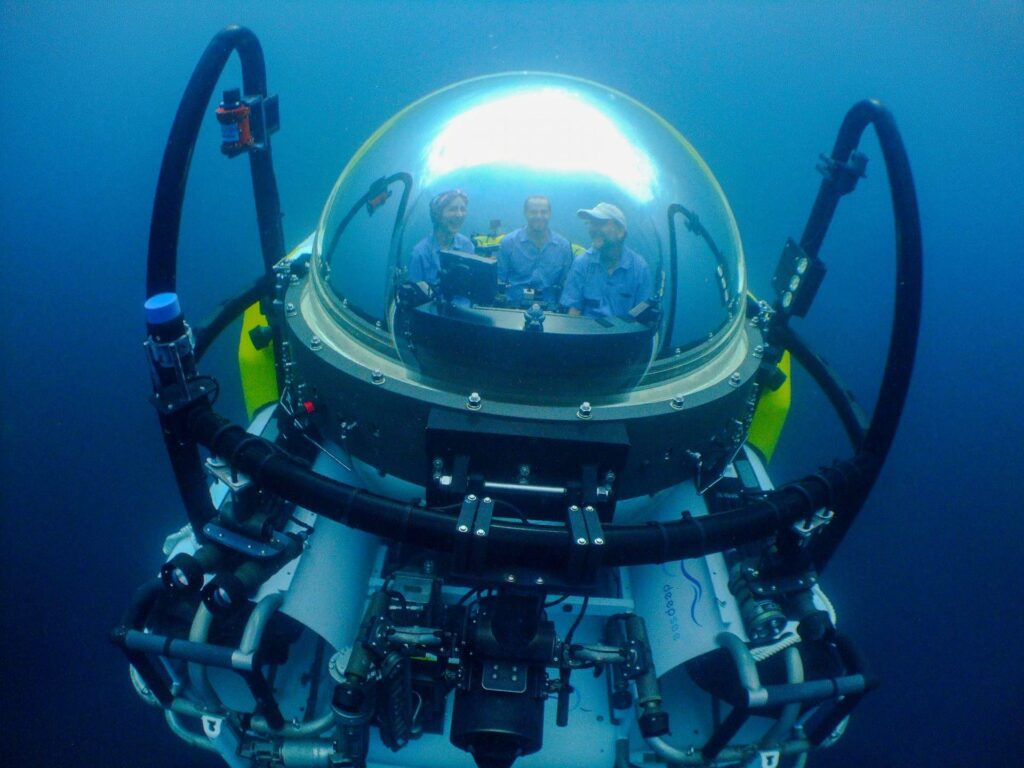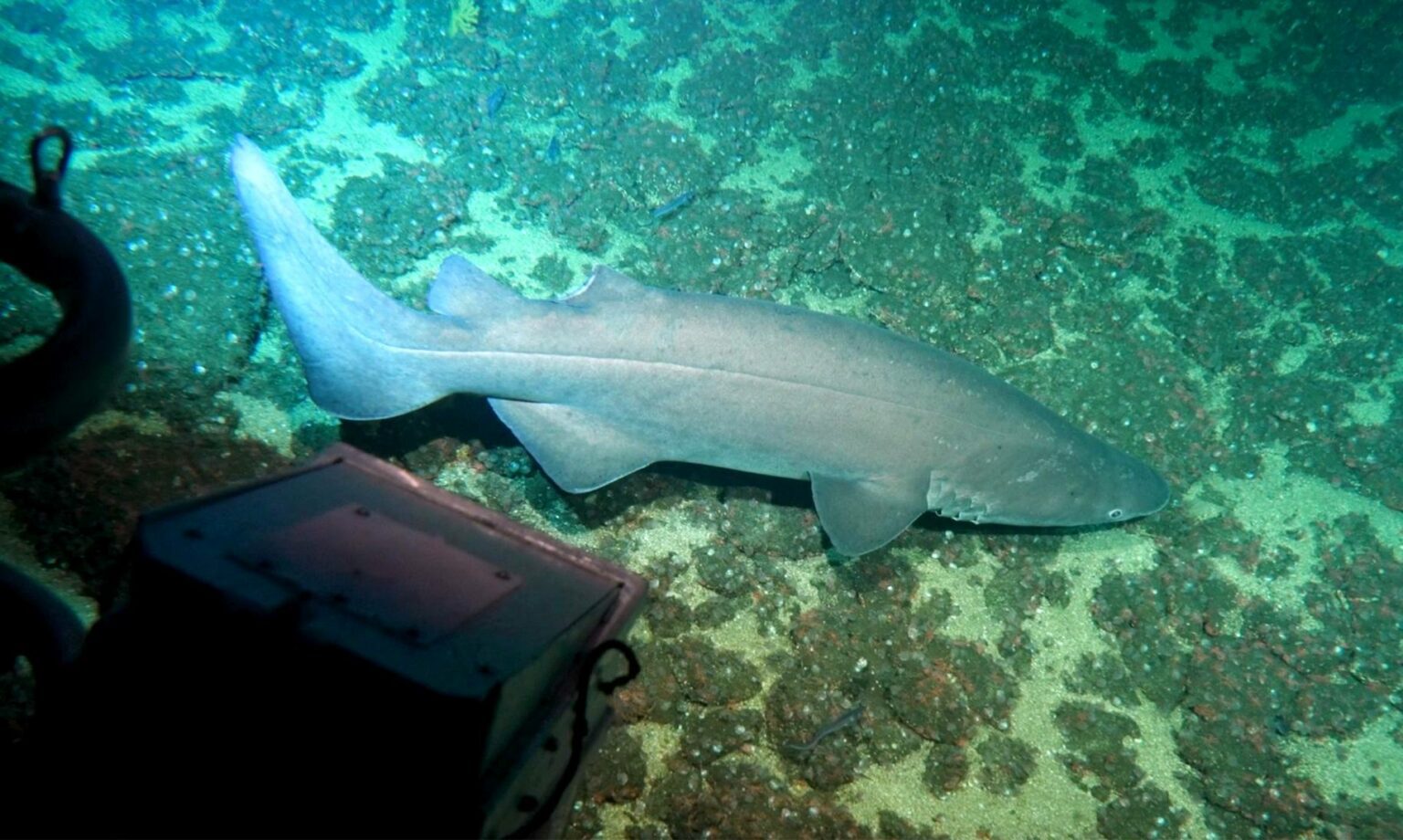The sight of 10 rarely seen prickly sharks gathered together caused excitement among the scientists making a submersible descent to the depths of Cordillera de Coiba, a collection of seamounts in the eastern Pacific Ocean off Panama.
The unprecedented shark assembly, along with two lone prickly sightings, constituted the first documented living evidence of the species Echinorhinus cookei in the biodiversity hotspot and Marine Protected Area (MPA) – and the findings have now been described in an academic study.
The sightings of the slow-moving sharks, their bodies covered by distinctive thorn-like denticles, occurred in May 2022 at two locations but mainly around the Kevan Mantell seamount, at depths ranging from 150 to 350m.
Prickly sharks, which can grow as long as 4m, are thought to live at depths ranging from 11 to 580m, but prefer the cooler waters found at depth. Observations had been so infrequent in the past that the IUCN Red List classified the species as Data Deficient.
This indicates that it is not possible to assess a species’ risk of extinction, though the prickly shark is considered at least Threatened – hence the scientists’ excitement at coming across a dozen living examples. Unfortunately, they are more often found dead as fisheries bycatch.
Unable to explain

The team carried out 11 submersible dives on outer seamount slopes using Undersea Hunter Group‘s 470m-rated, three-person DeepSee submersible from the liveaboard Argo.
The 10 prickly sharks, normally considered solitary animals, had assembled in what appeared to to be a deliberate gathering that the researchers have been unable to explain.
“The sighting of the rare prickly shark aggregating on Panama’s seamounts is a momentous find, of unique ecological significance – an observation that not only deepens our understanding of shark behaviour but also underscores the importance of protecting such unique habitats for future conservation efforts of this species,” said Stefanie Kaiser of the Senckenberg Research Institute & Natural History Museum, a co-author of the study.
The scientific team now suspects that the seamounts could prove to be a “critical” habitat for prickly sharks.
“Some of the best ways to reinforce the protection of the MPA is by keeping the satellite-monitoring programme of fishing vessels in the area operational 24/7,” commented lead author Héctor Guzmán from the Panama-based Smithsonian Tropical Research Institute, part of the Smithsonian Institution.
He said that last year Panama’s government, supported by a Marine Protection Alliance vessel, had captured an illegal Colombian fishing-boat carrying sharks and turtles in the Cordillera de Coiba.
The prickly sharks study has just been published in the Journal Of Fish Biology.
Also read: Challenger Deep Expedition to the Deepest Point on Earth, The Mariana Trench New Record Breaking Dive








